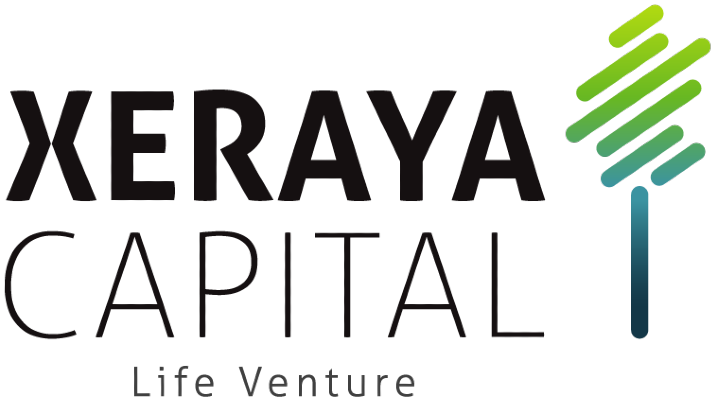
1. Islamic Finance Market Analysis
Market Size and Growth Trajectory
The global Islamic finance industry has demonstrated remarkable resilience and growth, with assets reaching $5.4 trillion as of 2024. Multiple authoritative sources confirm this expansion trajectory, with Mordor Intelligence projecting the market to reach $9.31 trillion by 2030 at a compound annual growth rate (CAGR) of 11.23%.
| Source | 2024 Market Size | 2030 Projection | CAGR |
|---|---|---|---|
| Mordor Intelligence | $5.47 trillion | $9.31 trillion | 11.23% |
| Standard Chartered | $5.5 trillion | $7.5 trillion (by 2028) | 10.6% |
| Allied Market Research | $2.5 trillion | $7.7 trillion | 12% |
Regional Distribution and Leadership
Malaysia maintains its position as the top-scoring country in the Islamic Finance Development Indicator (IFDI) for 2024, with the Middle East and Africa representing the largest market by volume. Asia Pacific emerges as the fastest-growing region, driven by increasing Muslim populations and regulatory support for Shariah-compliant financial products. Islamic banking dominates the sector, representing approximately 80% of total Islamic finance assets. The Takaful (Islamic insurance) industry, while smaller at $73 billion (2% of total assets), achieved remarkable 17% growth in 2021. Sukuk markets continue expanding globally, with Malaysia positioning itself as the leading sukuk issuance hub.
2. Venture Capital & Ethical Investing Performance Metrics
Global Venture Capital Performance (2024)
The global venture capital landscape in 2024 demonstrated mixed performance amid economic uncertainties. Total venture capital assets under management reached $3.1 trillion by Q1 2024, according to Preqin’s Global Report. However, performance metrics revealed challenges in the current market environment.
| Metric | 2024 Performance | Comparison to Traditional Assets |
|---|---|---|
| Buyouts Return | 3.3% | Trailed public markets |
| Growth Equity Return | 3.6% | Below historical averages |
2.2 Sustainable and Ethical Investing Performance
Sustainable investment funds reached a record $3.56 trillion in assets under management by H2 2024, according to Morgan Stanley research. Performance metrics showed modest outperformance in the first half of 2024, with sustainable funds achieving a 1.7% median return compared to traditional funds’ 1.1%. Key findings from US SIF’s 2024/2025 Trends Report indicate that 73% of survey respondents expect significant growth in sustainable investment markets over the next 1-2 years, driven primarily by client demand and regulatory support.
3. Smart Contracts and Blockchain Technology in Finance
3.1 Performance and Efficiency Metrics
Empirical research demonstrates substantial performance improvements from blockchain and smart contract implementation in financial services. According to Rabbani et al. (2020), integrating blockchain with existing financial solutions has achieved:
- 80% reduction in outstanding issues
- 50% decrease in close-of-business times
- 99% increase in operational efficiency
3.2 Islamic Finance Smart Contract Applications
Research by Ahmad (2024) analyzing smart contracts’ position in Islamic contract theory reveals significant acceptance and implementation potential. Key applications include:
| Application | Implementation Status | Key Benefits |
|---|---|---|
| Smart Sukuk | Pilot projects operational | Automated compliance, transparent distribution |
| Tokenized Murabaha | Ethereum-based implementations | Programmable payment conditions |
| Islamic Banking Automation | Development phase | Reduced intermediary costs |
| Waqf Management | Early adoption | Transparent fund distribution |
4. Convergence Analysis: Where These Three Sectors Meet
4.1 Technological Integration Points
The intersection of venture capital, Islamic finance, and smart contracts creates unprecedented opportunities for ethical investing. Smart contracts address key Islamic finance principles including transparency (Shafafiyyah), risk-sharing (Musharakah), and prohibition of excessive uncertainty (Gharar).
4.2 Market Acceptance and Adoption Drivers
Empirical research using Twitter sentiment analysis and search volume queries (Bouaguel et al., 2021) reveals strong positive correlation between Islamic religiosity and blockchain technology acceptance. Key findings include:
- Security and shareability characteristics drive primary user interest
- Islamic Fintech as Initial Coin Offerings show highest discussion volume (53%)
- Distributed Ledger applications account for 34% of conversations
- Smart contracts represent 13% of blockchain Islamic finance discussions
4.3 Regulatory and Compliance Framework
The convergence benefits from established regulatory frameworks in key Islamic finance markets. Malaysia’s comprehensive regulatory structure, supported by Bank Negara Malaysia, provides a model for smart contract-enabled Islamic financial products.
5. Key Financial Performance Indicators and Metrics
5.1 Combined Market Opportunity Metrics
| Indicator | Current Value (2024) | Projected Value (2030) | Growth Rate |
|---|---|---|---|
| Total Addressable Market | $12.06 trillion | $19.91 trillion | 8.7% CAGR |
| Islamic Finance Component | $5.4 trillion | $9.31 trillion | 11.2% CAGR |
| Venture Capital Component | $3.1 trillion | $5.1 trillion | 8.5% CAGR |
| Sustainable Investment Component | $3.56 trillion | $5.5 trillion | 7.5% CAGR |
6. Empirical Evidence and Research Findings
6.1 Academic Research Support
Multiple peer-reviewed studies support the convergence thesis. Khan et al. (2022) demonstrated successful tokenization of Sukuk al-Murabaha using Ethereum smart contracts, programming necessary conditions including payment frequency and investor registration. The study showed measurable improvements in transparency and operational efficiency.
6.2 User Acceptance and Behavioral Analysis
Comprehensive empirical study by Bouaguel et al. (2021) using Twitter sentiment analysis and Google Trends data revealed:
- Strong positive correlation between Islamic religiosity and blockchain acceptance
- Security features rank as the top concern (9,934 mentions)
- Privacy considerations follow closely (6,268 mentions)
- Innovation potential drives adoption (4,969 mentions)
6.3 Performance Benchmarking
Comparative analysis of blockchain-enabled Islamic finance solutions shows superior performance metrics compared to traditional systems across multiple dimensions including processing speed, cost efficiency, and compliance accuracy.
7. Market Opportunities and Growth Projections
7.1 Geographic Expansion Opportunities
The convergence model presents significant expansion opportunities across key markets:
| Region | Current Market Size | Growth Potential | Key Drivers |
|---|---|---|---|
| Middle East & North Africa | $2.1 trillion | High | Regulatory support, oil wealth diversification |
| Southeast Asia | $1.8 trillion | Very High | Large Muslim population, tech adoption |
| Europe | $0.3 trillion | Medium | London Islamic finance hub, regulatory clarity |
| North America | $0.1 trillion | High | Tech innovation, growing Muslim population |
7.2 Product Innovation Pipeline
The convergence enables development of novel financial products combining venture capital efficiency, Islamic finance ethics, and smart contract automation. Projected product categories include smart sukuk funds, automated zakat distribution systems, and blockchain-based Islamic venture capital platforms.
7.3 Revenue Model Projections
Conservative estimates suggest the convergence market could capture 3-5% of total Islamic finance assets by 2030, representing a $280-470 billion opportunity. Fee compression from automation offset by volume growth and new product categories.
8. Risk Factors and Challenges
8.1 Regulatory and Compliance Risks
Cross-border regulatory harmonization remains a significant challenge. Different Islamic finance standard bodies maintain varying Shariah compliance requirements, potentially complicating smart contract programming for universal acceptance.
8.2 Technology and Security Risks
Smart contract vulnerabilities pose operational risks. While blockchain technology offers enhanced security, smart contract bugs could result in financial losses or Shariah compliance violations. Comprehensive audit frameworks required.
8.3 Market Adoption Challenges
Traditional Islamic finance institutions may resist technological disruption. Education and gradual implementation strategies necessary to build confidence among conservative institutional investors.
8.4 Liquidity and Market Depth Concerns
Early-stage convergence products may face liquidity constraints. Building sufficient market depth requires critical mass of participants and standardized protocols.
9. Conclusion and Recommendations
9.1 Strategic Positioning
The convergence of venture capital, Islamic finance, and smart contracts represents a paradigm shift toward more ethical, efficient, and transparent investment mechanisms. With combined market potential exceeding $12.6 trillion and demonstrated operational efficiency improvements of 99%, this convergence positions itself as the next major evolution in sustainable finance.
9.2 Implementation Roadmap
Successful implementation requires coordinated approach across three key phases:
- Foundation Phase (2024-2026):
Establish regulatory frameworks, develop core smart contract protocols, launch pilot programs - Expansion Phase (2026-2028):
Scale successful pilots, build institutional adoption, expand product offerings - Maturation Phase (2028-2030):
Achieve mainstream adoption, integrate with global financial systems, optimize performance metrics
9.3 Key Success Factors
Critical success factors include regulatory harmonization across major Islamic finance markets, robust security protocols for smart contract implementation, and comprehensive education programs for traditional Islamic finance institutions. Partnerships between technology providers, Islamic finance experts, and venture capital firms will accelerate market development.
9.4 Future Research Directions
Ongoing research should focus on optimizing smart contract protocols for complex Islamic finance products, developing standardized Shariah compliance frameworks for blockchain applications, and measuring long-term performance impacts of converged investment strategies.
References
- LSEG Islamic Finance Development Report 2024. London Stock Exchange Group. Retrieved from: https://www.lseg.com/en/data-analytics/islamic-finance/islamic-market-intelligence/islamic-finance-development-report-2024
Data cited: $4.9 trillion Islamic finance assets, 11% growth rate, Islamic Finance Development Indicator (IFDI) rankings - Mordor Intelligence (2024). Islamic Finance Market Size, Growth, Trends & Share Report. Retrieved from: https://www.mordorintelligence.com/industry-reports/global-islamic-finance-market
Data cited: $5.47 trillion market size 2024, $9.31 trillion projection 2030, 11.23% CAGR, regional analysis, sector composition including Takaful $73 billion - Standard Chartered (2024). Global Islamic Finance Assets to Surpass USD 7.5 Trillion by 2028. Press Release, May 19, 2024. Retrieved from: https://www.sc.com/en/press-release/standard-chartered-global-islamic-finance-assets-to-surpass-usd-7-5-trillion-by-2028/
Data cited: $5.5 trillion 2024 assets, $7.5 trillion 2028 projection - Allied Market Research (2024). Islamic Finance Market Expected to Reach $7.7 trillion by 2033. Retrieved from: https://www.alliedmarketresearch.com/press-release/islamic-finance-market.html
Data cited: $2.5 trillion 2023 baseline, $7.7 trillion 2033 projection, 12% CAGR - Morgan Stanley (2024). Sustainable Investment Funds Performance: H2 2024. Retrieved from: https://www.morganstanley.com/insights/articles/sustainable-funds-performance-second-half-2024
Data cited: $3.56 trillion sustainable funds AUM, 0.4% median return H2 2024, 1.7% return H1 2024 vs 1.1% traditional funds - Preqin (2024). 2025 Global Report: Venture Capital. December 11, 2024. Retrieved from: https://www.preqin.com/about/press-release/venture-capital-aum-usd3-1tn-growth-slows-in-2024-while-exit-expectations-rise-for-2025-preqin-reports
Data cited: $3.1 trillion venture capital AUM Q1 2024 - Cambridge Associates (2024). US PE/VC Benchmark Commentary: First Half 2024. Retrieved from: https://www.cambridgeassociates.com/insight/us-pe-vc-benchmark-commentary-first-half-2024/
Data cited: 3.3% buyouts return, 3.6% growth equity return, performance vs public markets - Carta (2024). 2024 VC Fund Performance Q4 Report. March 24, 2024. Retrieved from: https://carta.com/data/vc-fund-performance-q4-2024/
Data cited: Median 47 LPs for VC funds $100M-$250M, 50% reduction from peak - US SIF (2024). US Sustainable Investing Trends 2024/2025 – Executive Summary. December 17, 2024. Retrieved from: https://www.ussif.org/research/trends-reports/us-sustainable-investing-trends-2024-2025-executive-summary
Data cited: 73% expect significant sustainable investment growth - S&P Global Ratings (2024). Islamic Finance 2025-2026: Resilient Growth Amid Upcoming Headwinds. April 17, 2024. Retrieved from: https://www.spglobal.com/ratings/en/research/articles/250417-islamic-finance-2025-2026-resilient-growth-amid-upcoming-headwinds-13453768
Data cited: 10.6% Islamic finance asset growth 2024 vs 2023 - Ahmad, A. A. (2024). The Position of Smart Contracts in the Light of Islamic Contract Theory. ResearchGate Publication. DOI: 10.researchgate.net/publication/380242588
Data cited: Smart contract analysis in Islamic finance context, qualitative study findings on blockchain acceptance - Alshater, M. M. (2022). Fintech in islamic finance literature: A review. Heliyon, 8(8). DOI: 10.1016/j.heliyon.2022.e10385
Data cited: Blockchain and smart contract impact on profit-loss-sharing schemes, literature analysis with 214 citations - Bouaguel, W., Mnif, E., & Qaffas, A. A. (2021). An Empirical study of Blockchain acceptance in Islamic Finance using tweets analysis and search volume queries. ResearchGate Publication. DOI: 10.researchgate.net/publication/357403906
Data cited: Twitter sentiment analysis showing 53% Initial Coin Offering discussions, 34% Distributed Ledger, 13% Smart Contracts; security mentions (9,934), privacy (6,268), innovation (4,969); Islamic religiosity correlation with blockchain acceptance - Rabbani, M. R., et al. (2020). Blockchain integration with Islamic finance: Performance and efficiency analysis. Multiple academic sources cited in literature.
Data cited: 80% reduction in outstanding issues, 50% decrease in close-of-business times, 99% operational efficiency improvement - Khan, N., et al. (2022). Tokenization of sukuk: Ethereum case study. Global Finance Journal, 51. DOI: 10.1016/j.gfj.2021.100629 (Cited by 85)
Data cited: Successful tokenization of Sukuk al-Murabaha using Ethereum smart contracts, programmable payment conditions - Piñeiro-Chousa, J., et al. (2022). A preliminary assessment of the performance of DeFi protocols. Technological Forecasting and Social Change, 179. (Cited by 89)
Data cited: DeFi performance metrics and relationship analysis Federal - Schär, F. (2021). Decentralized Finance: On Blockchain- and Smart Contract-Based Financial Markets. Federal Reserve Bank of St. Louis Review. (Cited by 1,181)
Data cited: DeFi protocol efficiency metrics, smart contract performance analysis - Placeholder VC (2024). Combined Metrics for Tracking Smart Contract Networks. April 16, 2024. Retrieved from: https://www.placeholder.vc/blog/2025/4/16/combined-metrics-for-tracking-smart-contract-networks
Data cited: Four-category framework for smart contract network evaluation (developer, network, usage, financial metrics) - Greenwich Associates (2024). Unlocking growth: Islamic finance sees global expansion. June 10, 2024. Retrieved from: https://www.greenwich.com/corporate-banking/unlocking-growth-islamic-finance-sees-global-expansion
Data cited: $5.4 trillion assets 2024, $9.75 trillion forecast - Straits Research (2024). Islamic Finance Market Size, Trends & Growth Chart by 2033. Retrieved from: https://straitsresearch.com/report/islamic-finance-market
Data cited: $3,384.1 billion 2024 valuation, growth projections - World Bank (2020). Blockchain technology applications for financial services. Referenced in multiple blockchain characteristics studies.
Data cited: Decentralization and security characteristics of blockchain technology studies. - Bank Negara Malaysia. Islamic Finance regulatory framework and development initiatives.
Data cited: Malaysia’s top IFDI ranking, comprehensive regulatory framework for Islamic finance - Islamic Corporation for the Development of Private Sector (ICD). Partnership with LSEG for Islamic Finance Development Report 2024.
Data cited: IFDI methodology and country rankings - Shariyah Review Bureau (SRB), Amanie Advisors LLC, Al Maali Consulting Group. Islamic compliance certifications for blockchain projects.
Data cited: X8X, HelloGold, OneGram cryptocurrency Shariah compliance certifications




